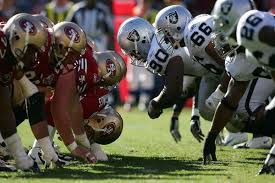Billy Kilmer
- David Hegler

- Feb 3, 2024
- 4 min read

Billy Kilmer traveled quite a path to glory in the NFL. While at UCLA, he was one of the last single-wing tailbacks to earn All-America honors. While in San Francisco, he was a participant in one of the biggest blunders in the sport's history. It wasn't until he made it to the nation's capitol when he found true success, once even bringing his team to the Super Bowl.
The Early Years
Billy Kilmer was born on September 5, 1939 in Topeka, Kansas, soon moving to Southern California where he could grow into a superior athlete. He starred in baseball, basketball and football while at Azusa's Citrus Union High School, earning All-American honors on the court and All-Conference honors on the diamond. However, his football team was never very good and Kilmer received scant recognition.
After spending a year at nearby Citrus Junior College, Kilmer received a scholarship offer from UCLA. In 1959, his first full year as the Bruins' starter, Billy Kilmer led the Bruins to a tie against eleventh-ranked Purdue, a 23-7 loss to seventeenth-ranked Washington, a 10-3 win over rival and fourth-ranked USC and finally a 36-8 loss to eventual national champion Syracuse. By the time his junior year was completed, Kilmer had completed 40% of his passes for 702 yards and seven touchdowns against just five interceptions.
UCLA was better the following year, finishing 1960 with a 7-2-1 record. Along the way, Kilmer led the Bruins to a 8-7 win over seventh-ranked Pitt, a 10-8 loss to thirteenth-ranked Washington, a 7-6 loss to USC and a stunning 27-6 win over eleventh-ranked Duke in Billy Kilmer's last game as a collegian. He finished his senior year having completed 49,6% of his passes for 1,086 yards and eight touchdowns against eight interceptions, enough to earn him a first-team All-America honors.
The NFL

As a professional, things started off well for Billy Kilmer as he was chosen by both the 49ers of the NFL and the Chargers of the AFL in the 1961 Drafts. With choices on opposite ends of the state, Kilmer decided to travel to the San Francisco Bay Area where he would sit for the next seven years. In those years, he very rarely saw the field as a quarterback, but with his fleet feet, he saw action as a receiver.
Late in 1962, he fell asleep at the wheel and drove off the Bayshore Freeway and into the adjacent Bay. The broken leg that he suffered cost him all of 1963, giving him time to ponder the course of his career.
After his return in 1964, he played a unique role in one of the sport's biggest follies. Against the Vikings, George Mira threw him a pass over the middle which Kilmer t hen fumbled away. Seeing his opportunity, defensive lineman Jim Marshall picked up the ball and ran 66 yards the wrong way, tossing the ball out of the endzone for a 49ers safety. To this day, rare is the fan who remembers the winner of that game (it was the Vikings). All that they remember is "Wrong Way Marshall".

Three years later, Kilmer was selected by the New Orleans Saints in the Expansion Draft. He only started once that year, a loss, but when into 1968 brimming with confidence. As a first year starter on a second-year team, he played pretty well. In 11 starts (four wins, seven losses), he completed 53% of his passes for 2,060 yards and 15 touchdowns against 17 interceptions. He was even better the following year, completing 57% of his passes for 2,532 yards and 20 touchdowns against 17 interceptions.
After going 2-8 in 1970, the Saints elected to draft Ole Miss's Archie Manning, making Billy Kilmer expendable, trading him to the Washington Redskins. He immediately stepped into a much better situation as Washington was loaded with grizzled veterans starving for a championship. That year, Kilmer led the Redskins to an 8-4-1 record, losing to the 49ers in the first round of the playoffs.
But aside from the glamorous record, Kilmer entered 1972 inspired by his overall performance, throwing for nearly twice as many touchdowns (19) as interceptions (11). But that doesn't mean that trouble wasn't lurking around the corner. Although the Redskins boasted a solid record at the time, the fans wanted more production from their offense and called for a change under center.
So after a gut-wrenching one-point loss to the Patriots in Week 3, coach George Allen made the switch, going with wily veteran Sonny Jurgensen. Four weeks later, the job was Billy Kilmer's for good as Jurgensen tore his Achilles tendon. Despite the hiccup, it proved to be a magical year for billy Kilmer and his teammates. With a 53.7% completion rate, 1,648 yards and a league leading 19 touchdown passes, Kilmer was invited to his first and only Pro Bowl while leading Washington to its first Super Bowl appearance where the magic ran into a brick wall commonly known as the 1972 Miami Dolphins.
After that magical run, Billy Kilmer never again returned to the Super Bowl, spending the rest of his career trying to rekindle the spark that had brought him so far. Still, he would enjoy winning seasons in five of his last six seasons in the NFL, even completing more than 58% of his passes in 1974, the most accurate season of his long career. Billy Kilmer retired in 1978.



Comments